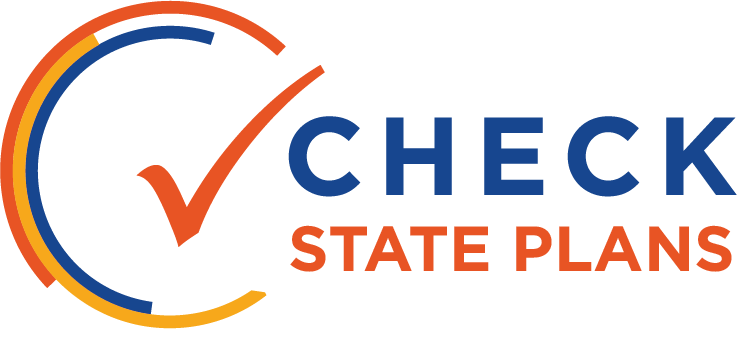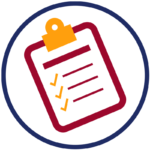
MINNESOTA
- Overview of Minnesota's Plan
- Equity
- Strengths
- Improvements
- Coherent and Aligned Vision for Improving Outcomes
- Strategic Use of Funding and Alignment of Resources
- Rigorous Review Process
- Continuous Improvement, Monitoring and Evaluation
- Evidence-Based Interventions
- Capacity Building and Autonomy
- Engagement
- Sustainability
Promise to Practice Overview
Equity
Equity is an area of strength for Minnesota. It is a pillar of the comprehensive needs assessment and the state instructs districts to include strategies that are appropriate to the needs of the student population.
Strengths
Minnesota’s needs assessment is strong, it’s “PLC Roadmap” is exemplary, and the review process for the turnaround plans is thorough. Minnesota’s grant funding approach to only those districts with the highest proportion of identified schools is a smart, thoughtful way of targeting limited resources, though it will be important to ensure that other schools that are struggling have other avenues for support.
Improvements
Given the strength of the state’s ESSA plan, the state should create materials based on the substance of what is in the ESSA plan so that stakeholders — namely educators — can obtain and utilize state guidance. Minnesota could also improve its long-term evaluation approach in order to better learn what works and what doesn’t in school improvement, as well as the guidance it provides on evidence-based practices.
Coherent and Aligned Vision for Improving Outcomes:
Strategic Use of Funding and Alignment of Resources:
Rigorous Review Process:
Continuous Improvement, Monitoring and Evaluation:
Evidence-Based Interventions:
Capacity Building and Autonomy:
Engagement:
Sustainability:
Click through the tabs on the left to see how Minnesota scored in each category.
Equity
How well does the state’s approach to school improvement include focused attention on supporting underserved students and closing the achievement gap? Does the state require LEAs to maintain an equity focus in their school improvement plans, activities and resource allocations?
This is an area of significant strength for Minnesota. Equity is a common theme throughout Minnesota’s school improvement documentation and it is clear that it is a state focus. However, there is an opportunity to dive deeper into the drivers that cause systemic inequities. For example, Minnesota’s plan encourages districts to evaluate strategies to counter systemic inequities by increasing underserved students’ access to experienced and qualified teachers.
Equity is a main pillar of the theory of action for school turnaround. In the comprehensive needs assessment, “schools must disaggregate the data by ethnicity and special student populations and examine for gaps and inequities in student achievement/outcomes.” In the school improvement plans, the state instructs districts to include strategies that are appropriate to the needs of the student populations.
Strengths
How is the state thoughtfully leveraging ESSA’s flexibility to put in place the necessary policies and procedures that create an enabling environment for effective and sustained school improvement, and that consider state/local lessons learned from past efforts? What parts of the state’s turnaround strategy or guidance to LEAs were strongest or exemplary?
Minnesota’s grant funding approach to only those districts with the highest proportion of identified schools is a smart, thoughtful way of targeting limited resources, though it will be important to ensure that other schools that are struggling have other avenues for support. As mentioned above, Minnesota’s focus on equity and underserved groups of students is also strong.
Minnesota’s needs assessment is also particularly strong. The “PLC Roadmap” is an exemplary piece of guidance and professional development that can be applicable to all educators and schools, regardless of whether or not they are comprehensive or targeted support.
The review process for district and school turnaround plans is thorough, and it is wise for the state to make use of third party expertise to aid in the process. Alignment between state legislation, the MDE accountability system and the theory of action for comprehensive and targeted support districts/schools is very strong and leads to greater likelihood of implementation with fidelity.
Improvements
How can the state improve its turnaround efforts? What parts of the state’s strategy or guidance to LEAs were unclear? What risks and challenges might the state face with its current approach?
Minnesota could utilize its authority to a far greater degree to drive the outcomes and systems-change it wants to see from districts and schools. The state’s approach seems to be mostly bottom-up, with the needs assessment being completed by the district or school and then submitted to the agency for approval as long as it meets the established criteria. Throughout many documents and the ESSA plan there is language indicating “working within the system,” or selecting an initiative “that is a best fit for the system,” yet it is the current system that led to the need for turnaround plans in the first place.
Given the strength of the state’s ESSA plan, the state should create materials based on the substance of what is in the ESSA plan so that stakeholders – namely educators – can obtain and utilize state guidance. Although the documents created are clear and easy to follow, much of the specific guidance and intervention strategies are difficult to find.
Minnesota could also improve its long-term evaluation approach in order to better learn what works and what doesn’t in school improvement. This may be happening, but it was not clear from the available documents. The state could also provide more guidance to districts on evidence-based practices. Although this may be coming in the form of a list, it would be most helpful to provide more detailed guidance for how to make use of evidence, rather than simply a list of interventions.
Coherent and Aligned Vision for Improving Outcomes
How well does the state articulate a coherent vision or theory of action that drives their school improvement efforts? Is this vision aligned with the state’s accountability system and goals for closing the achievement gap?

Minnesota’s theory of action is exceptionally clear, concise, and incorporates all the required components of ESSA as well as state priorities. There is a clear focus on equity and eliminating achievement gaps, and the final results from the theory of action are both clearly articulated and stated to apply to all schools, not just low performing schools.
Further, the theory of action is stakeholder-authored and includes an expectation that districts and schools engage in ESSA-required comprehensive needs assessments to “identify, name and eliminate inequities.” Minnesota has developed a detailed template for comprehensive and targeted support and intervention schools that includes a list of resources, materials and workshops available to districts supporting their needs assessment process.
The state’s theory of action would be strengthened further by linking it directly and explicitly to the statewide accountability system. While increased student outcomes are stated generally, the field would benefit from aligning the work the state and districts with the specific outcomes emphasized in Minnesota’s North Star Accountability System.
Strategic Use of Funding and Alignment of Resources
Is the state allocating funding in a way that is strategic and maximizes resources? Are LEAs expected to prioritize improvement efforts that address the underlying performance issues?

It appears that Minnesota is allocating improvement funding to those districts that have the highest proportions of schools identified for comprehensive and targeted support, which could be an effective way of targeting resources. However, states utilizing formula grants may bear a slightly higher burden to help districts develop creative ways to allocate resources across programs to fulfill their goals. In addition, Minnesota indicates that, for schools identified for improvement, districts should articulate the resource inequities that their plans will address. Minnesota has also made available grant opportunities for regional service centers to assist districts and schools in implementing research-based interventions, and the process through which these grants are accessed seems well-documented.
However, it appears that the state has not finished determining the criteria it will use to allocate funds. No evidence could be found to help the field understand whether funding would be prioritized based on number of schools or number of students being served by schools in improvement, for example.
The factor holding this back from having a strong rating is that the state’s grant opportunities do not include an identified list of high-impact interventions or areas of focus that the state hopes districts and schools will employ. Unless it does so, Minnesota could be missing an opportunity to influence behavior systemically. Clarifying for districts and schools how the state hopes they will engage in evidence-based turnaround efforts, and then asking them to plan accordingly, would allow Minnesota to allocate funds based on the right plans, not simply the most thorough plans.
Rigorous Review Process
Is the state applying rigorous criteria and review processes to ensure resources will be used to support effective school improvement efforts? Is the state prioritizing funding to LEAs who demonstrate the greatest need for school improvement funding (including LEAs with a high percentage of CSI and TSI schools) and the strongest commitment to school improvement?

Minnesota’s review process seems strong and includes all of the appropriate checkpoints along the way, beginning in the classroom, through the district system and then to the state, and reviewed by an external evaluator. The state is clearly prioritizing districts with a high percentage of comprehensive and targeted support and intervention schools by awarding grants to those districts, but without a specific rubric it is not clear what changes and priorities the state is most interested in seeing.
Continuous Improvement, Monitoring and Evaluation
Does the state have a robust, data-driven process to monitor LEAs’ implementation of the school improvement plans within their district? Did the state establish clear milestones to ensure improvement over time, and within four years?

Minnesota appropriately dedicates the lion’s share of its focus on those schools showing the lowest performance, with comprehensive and priority schools – the lowest performing 5% of schools in the state – receiving heavy involvement and monitoring. A small sampling of plans will also be reviewed regularly as a check on whether districts are faithfully reviewing improvement plans from their schools, though there is a concern over whether this will make districts more likely to check school plans for compliance rather than quality.
Districts are required to submit progress updates to the state and their regional center in which they describe progress on their goals. Beyond this, there is little detail on the degree to which the state will provide feedback to districts on plans for schools not in improvement status.
Minnesota’s guidance for continuous improvement, monitoring and evaluation is included in the state’s ESSA plan, however, the agency has not developed robust materials to guide district’s in creating effective strategies to continuously improve.
Evidence-Based Interventions
To what extent is the state mandating LEAs use evidence-based strategies in their improvement efforts? Does the state provide guidance and supports to LEAs to help them identify and implement the most effective strategies based upon their needs?

Evidenced-based strategies are mentioned throughout Minnesota’s ESSA plan, as well as the accompanying documents, and this is clearly a focus of the state. Through statute, the state of Minnesota has identified 3rd grade reading and 8th grade math as key content areas of focus, both of which are supported by national research as being pivotal checkpoints. However, the state is not incentivizing particular strategies, tied to funding, to target those areas.
Minnesota’s school improvement plan guidance requires at least one strategy or intervention that is supported by the strongest level of evidence available and is appropriate to the school’s needs. The needs assessment process appears strong, and likely to provide adequate evidence to make decisions on strategies to pursue. However, there does not appear to be space for the district to explain the evidence or demonstrate that there is evidence for a chosen strategy, only a box to check. The state says it will provide a list of evidence-based interventions, but that list could not be found.
Capacity Building and Autonomy
How well does the state articulate, delineate or set parameters around which interventions and responsibilities belong to the state, LEA and/or school? Does the state provide support or guidance to help LEAs identify and reduce barriers to school improvement? Does the state have a framework or process to support and monitor outside entities who partner with the state, LEAs or schools in school improvement efforts?

Capacity building is included in Minnesota’s stated theory of action for school improvement, but so far it is not clear how that is operationalized after plans are submitted. At this point the responsibilities for the state, regional centers, and districts in capacity building are not defined in available school improvement materials. Minnesota states that an external evaluator reviews comprehensive support school plans.
Minnesota sets the guidelines and processes that districts and schools must follow for their turnaround efforts, but consistently does not direct or incentivize certain strategies or intervention. The state has a strong comprehensive needs assessment tool for schools to use, but aside from the lowest performing schools it is uncertain the extent to which districts will ensure that schools are using the tool faithfully. No mention was found of a process for evaluating external state partners aside from the regular state review of school and district plans.
Engagement
Does the state require LEAs to engage with stakeholders such as parents and community members in the development and implementation of their school improvement plans? Does the state provide sufficient guidance and resources to LEAs to effectively do so, helping them foster local buy-in and promote sustainability?

Minnesota’s improvement plan tool clearly states that “plans describe stakeholder involvement that is meaningful during needs assessment, plan development and plan implementation.” The plan asks specific questions about when and how stakeholders will be engaged. Furthermore, the state’s theory of action includes that “educators and stakeholders will be meaningfully engaged in the improvement process.” Minnesota also requires schools to make plans and progress publicly available for review.
This component could be strengthened with some state guidance on best practices for stakeholder engagement and tools for districts and schools to use. Including, but not limited to, exemplar engagement practices and district stakeholder engagement vignettes.
Engagement
Does the state have a plan in place to review the school improvement efforts statewide and evaluate the impact and effectiveness? Does the state have a process in place to support LEAs and schools by enhancing their capacity to maintain their improvement efforts upon exiting identification and intervention?

As part of the school improvement process, districts are required to submit progress updates for each goal at the end of the year to both the state and their regional center. Through this, Minnesota appears to plan to review school improvement efforts on a district or school-level basis, with an initial year and three-year review, both of which include a student achievement and equity component.
However, there is little evidence of a process to maintain support and growth upon exiting interventions as required by the state, though the state’s regional centers could play a role. In addition, Minnesota does not appear to describe a statewide plan to review efforts and evaluate impact toward established state goals.
- Overview of Minnesota's Plan
- Goals
- Standards and Assessments
- Indicators
- Academic Progress
- All Students
- Identifying Schools
- Supporting Schools
- Exiting Improvement Status
- Continuous Improvement
 OVERVIEW
OVERVIEW
Strengths
- Minnesota put forth a solid plan to build on a compelling vision for its K-12 education system, including ambitious goals to raise achievement and narrow achievement gaps.
- Minnesota also took a step in the right direction by including a strong weighting for the results of individual groups of students in its school rating system.
- The state should also be recognized for revising the vision for its department of education, placing a significant focus on equity and stakeholder engagement.
- The state will also go beyond the law’s minimum requirements to identify additional struggling schools. Moreover, the state provides detailed estimates of how many schools it would identify under its various identification rules, including the type of school (grade level and Title I versus non-Title I), the geographic region of the school, and, where relevant, the low-performing subgroup for which the school was identified.
Weaknesses
- While Minnesota’s plan has a number of elements aiming to address equity gaps, its plan has a few places in need of further explanation.
- Given the state’s multiple identification rules, it should work to ensure school leaders and parents can understand why a school earns a particular rating and what it needs to do to demonstrate success.
- The state will be including higher-performing groups in the accountability system, what the state calls “counter groups,” such as students without disabilities and non-low-income students, which could lessen the impact of its focus on historically underserved groups of students.
Click through the tabs on the left to see how Minnesota scored in each category.
GOALS
Minnesota’s vision for its K-12 system places significant emphasis on increasing equity and closing achievement gaps.
Minnesota should also be applauded for clearly defining what equity means and for recognizing the challenges posed by structural and institutional barriers. The state set ambitious goals aligned with these values, but could capitalize on them more by having them inform decisions about which schools require support/intervention.
Minnesota set ambitious long-term academic and graduation goals: a 90 percent rate for all students, with no student group rate below 85 percent by 2025.
The state should provide data and evidence to demonstrate that these goals strike the appropriate balance between ambition and feasibility. The state’s goals and interim targets are aligned with one another, and given the evidence provided in the plan appear to be fairly ambitious. However, within the state’s accountability system there’s no clear consequence for schools or districts for failing to meet the goals, which may undermine their role in incentivizing change. That’s especially important given the low baseline-proficiency rates for historically underserved student groups—right now, it’s not clear how the state department of education will get those groups to 85 percent by 2025.
The state’s English language proficiency goal is for 85 percent of English learners to make progress in achieving English proficiency by 2025.
Students are considered to be making progress toward proficiency if they reach or exceed their annual individual target goals on the ACCESS 2.0 assessment. The state bases this goal on past English learner performance data.
Minnesota also deserves credit for setting additional goals.
The state set goals for 3rd-grade literacy and 8th-grade math. For both indicators, the goal is an achievement rate of 90 percent with no student group below 85 by 2025. As the state’s school quality indicator, Minnesota set an attendance goal of 95 percent for all students, with no student subgroup below 90 percent by 2020.
STANDARDS AND ASSESSMENTS

Minnesota’s English language arts standards are based on the Common Core State Standards, and their math standards are based on Minnesota’s Academic Standards.
Although its ESSA plan does not include much information about assessments, Minnesota will use the Minnesota Comprehensive Assessments (MCA), the Minnesota Test of Academic Skills (MTAS), and ACCESS 2.0 for English language proficiency.
Beginning in 2018, Minnesota will provide translations of academic words for the math and science MCA assessments in Spanish, Somali, and Hmong.
The state determined that Spanish, Somali, and Hmong are all languages other than English that are present in the state to a significant extent. Minnesota should be recognized for providing translation accommodations in paper and online exams across those three languages and for its commitment to continue to explore other options to support English learners, including through audio translations and translating supporting documents.
It is positive that Minnesota will include students who are eligible to, but do not participate in the statewide assessment system toward the school’s overall academic achievement score. That said, the state could strengthen its plan by clearly identifying schools that miss this mark.
Minnesota should strengthen its plan by including information about how it plans to meet the 1 percent cap on alternate assessments for students with the most significant cognitive disabilities.
Similarly, Minnesota could further strengthen its plan by providing more information about its alternative achievement standards and aligned assessments for students with the most severe cognitive disabilities.
INDICATORS
Minnesota plans to use a small set of indicators, including academic achievement, academic progress, graduation rates, progress toward English language proficiency, and chronic absenteeism.
The state’s graduation rate indicator is based on the four-year and the seven-year adjusted cohort rate. By using both measures, Minnesota hopes to both encourage on-time graduation and incentivize schools to graduate students who may need additional time. The four-year rate is weighted higher than the seven-year rate, giving a higher relative weight to on-time graduation. The state may want to monitor its data to ensure that including both rates does not deemphasize the focus on on-time graduation.
In addition to student achievement and growth, Minnesota plans to use a measure of attendance as its school quality or student success indicator. It does not appear that this measure captures student absences due to suspension.
Minnesota is exploring—due in large part to stakeholder input—the possibility of including other measures.
The state is considering, whether in the future to include in-school suspensions within the chronic absenteeism indicator. The state also plans to add a measurement of equitable access to a well-rounded education, including high school courses focused on college and career readiness. This would result in greater alignment with the state’s vision and goals.
The state will also include a strong indicator measuring English language proficiency.
Student targets are based on their entry grade and performance level. Depending on their entry level, students are afforded a maximum of seven years to reach English proficiency. Points are awarded on a percentage basis, and students who reach 70 percent of their targets receive 70 points. Targets are updated annually based on students’ progress in the prior year. However, if a student misses his or her target, the goal remains the same.
ACADEMIC PROGRESS
Minnesota’s academic achievement indicator is based on the percentage of students who meet or exceed standards in English language arts and math.
Formerly, Minnesota gave partial credit to students who did not fully meet standards, but it will no longer do so; its new approach sets a higher standard.
For elementary and middle schools, Minnesota will use a growth-to-proficiency model that awards points based on students improving through achievement levels on state math and English language arts assessments. The way that this system awards points is structured such that those students who make the greatest growth earn the most points. Furthermore, the system awards significantly more points to schools that move students from failing to meeting standards.
Minnesota deserves credit for using these indicators to identify schools for additional support.
Minnesota schools in the bottom 25 percent on these indicators (plus English language proficiency and graduation rates) will be identified for additional support from the state’s regional support centers and have access to additional training opportunities focused on needs assessments and continuous improvement plans.
ALL STUDENTS
Minnesota will average the results across all qualifying subgroups of students (as opposed to looking solely at a school-wide average) to determine how many points schools earn for each indicator in the accountability system.
The state will use a minimum threshold of 20 students to determine if schools should be held accountable for the performance of subgroups. However, in addition to including federally required subgroups, Minnesota includes higher-performing “counter groups,” such as students without disabilities and non-low-income students, which will water down the benefits of weighting each historically underserved group equally.
What’s more, Minnesota is using a normative, rankings-based system to identify schools for improvement.
While that may help to identify the schools with the absolute most need, it might ignore schools with low performance that happen to fall just above the cutoff for identification (overall or for a group of students) to improve.
While any accountability system will have cutoff points, the challenge with a normative system such as Minnesota’s is that the threshold is based on a school’s performance relative to other schools in the state rather than an objective performance outcome such as college and career readiness.
In this kind of system, it’s possible for students to appear as though they are performing well, when in fact they are not on track to be ready for college or career after graduation.
The state plans to include English learners who achieved proficiency as members of the English learner subgroup in its accountability system.
Although this will tend to inflate the scores of those English learners who continue receiving services, on its state report card Minnesota will disaggregate the data to allow the unique performance of current English learners to be identified.
![]()
IDENTIFYING SCHOOLS
Minnesota deserves credit for going beyond ESSA’s requirements both in terms of the number and types of schools identified.
The state has a unique method for identifying low-performing schools, and it provides a detailed appendix with estimates of how many schools it would identify under its various rules, including the type of school (grade level and Title I versus non-Title I), the geographic region of the school, and, where relevant, the low-performing subgroup for which the school was identified.
There’s a concern that Minnesota’s approach won’t provide sufficient incentives for improvement or clear front-end transparency for schools.
While Minnesota’s approach is thoughtful for identification purposes, it may be difficult to explain to families, educators, and the broader community, which may ultimately undermine its ability to incentivize change.
To identify the lowest-performing 5 percent of Title I schools for comprehensive support, Minnesota will use three-stage processes that vary somewhat by grade span.
The first step for elementary and middle schools is to identify the lowest-performing quarter of Title I schools in terms of math, English language arts, or growth toward English language proficiency. In the next step, the state will identify from among that subset of schools those within the lowest quarter of either math progress or reading progress. Finally, among the even smaller group of Title I schools, the state will identify the 5 percent (from among the total number of Title I schools) with the lowest attendance rates.
The major difference for high schools is that the second step is based on school graduation rates and is divided to accommodate both the four- and seven-year graduation rates. The final determination among those schools is based on attendance.
To identify schools for targeted support, Minnesota compares the performance of its subgroups to the bottom quartile of its all students group in both math and English, as well as English language proficiency. The state will identify schools for additional targeted support if they have a subgroup of students whose performance is below the average of all students in schools identified for comprehensive support.
SUPPORTING SCHOOLS
Minnesota proposes a tiered approach to school support and interventions, and sets a clear timeline for improvement that indicates when schools and districts will receive various types and intensities of interventions.
The state’s plan describes two main avenues of intervention. The first is support from Regional Centers of Excellence, and the plan provides statistics on the centers’ past track record in supporting school improvement. The second is competitive grants for districts with the highest proportions of schools identified for comprehensive or targeted support, but it’s not clear what exactly districts might do with the funds.
Although Minnesota describes how it will increase state capacity to support school improvement, it is unclear whether the capacity described will be sufficient to support effectively the number of districts and schools in need of improvement.
The plan suggests that the entire 7 percent school improvement set-aside will be for grants and for Regional Centers, which may leave districts that have a lower proportion of schools identified without external support and without resources to boost their internal capacity.
Additionally, it’s unclear from the plan what the funding balance will be between competitive grants and Regional Center support, or what would constitute sufficiency for either.
Finally, the state has chosen not to provide direct student services using the optional 3 percent set-aside, which would have provided the state an additional opportunity to align its school improvement activities with its statewide goals.
EXITING IMPROVEMENT STATUS
Despite relying on a rankings-based identification system, Minnesota requires schools identified for improvement to do more than simply no longer qualify in the next round of identification.
In addition to no longer meeting identification criteria, both comprehensive and additional targeted support schools must also improve on all indicators that led to identification, and to demonstrate higher proficiency rates and progress toward English language proficiency than the 25th-percentile Title I school.
The state could build on this solid start by specifying how much improvement is needed and how that will be defined.
For example, rather than pegging its exit criteria to the performance of the future 25th percentile, the state could use the current level of performance at the 25th percentile as a clear target for schools to reach.
In addition, the state should consider setting exit criteria for targeted support and improvement schools (in addition to comprehensive and additional targeted support schools).
CONTINUOUS IMPROVEMENT
Minnesota’s continuous improvement plan lacks details.
The state’s plan includes several references to continued stakeholder engagement. For example, the plan highlighted engagement related to assessments and school recognition. The state also described insights from the stakeholder engagement Minnesota conducted prior to submitting the plan.
However, the plan does not include a comprehensive plan for ongoing stakeholder engagement to revise the plan as needed, nor for learning from implementation efforts and modifying as needed.






